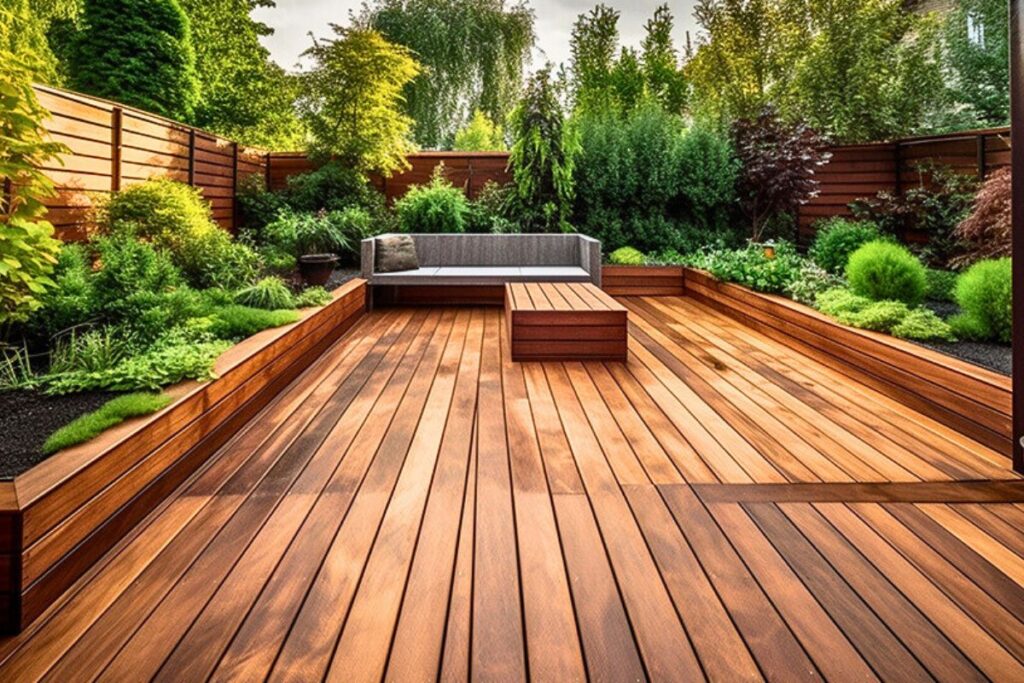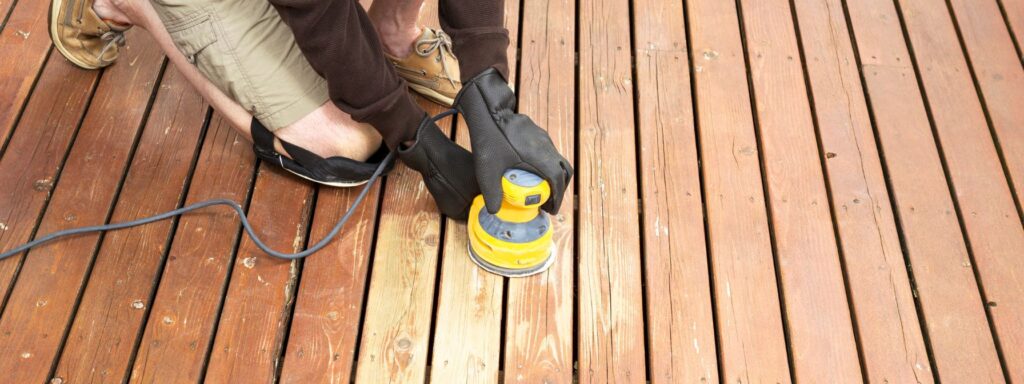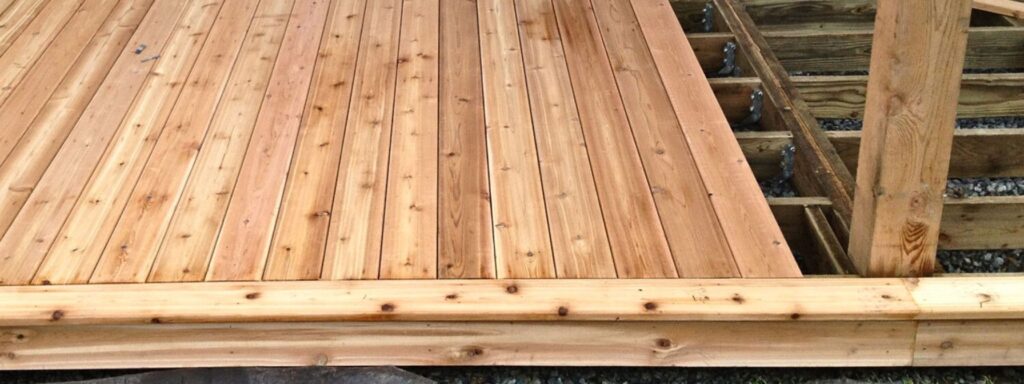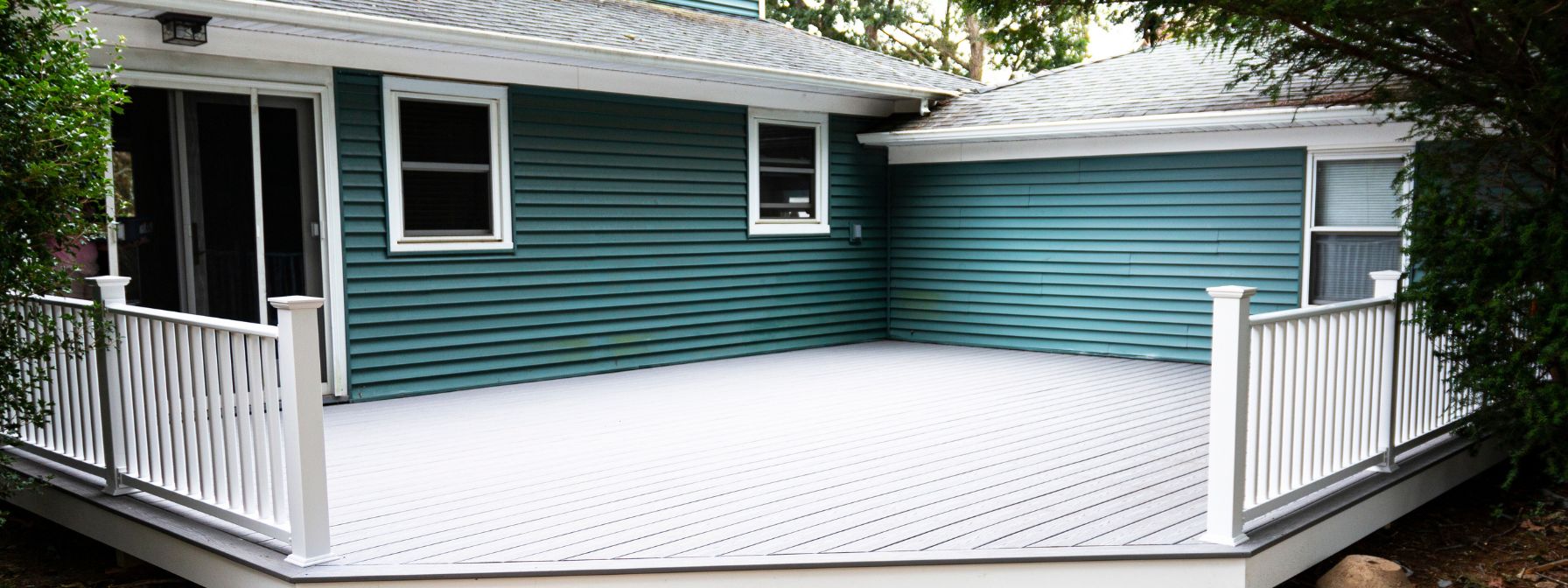Choosing the suitable material for your deck is crucial for its durability, look, and upkeep. It can be confusing with so many options available, like traditional wood or newer materials. Each type has its benefits, like how well it withstands wear or heat, affecting how long your deck will last and how much you will enjoy it. This is an excellent time to consider what factors matter most to you in the best deck material. Explore the different choices and find the best material for decks that fits your style and practical needs.
I. Understanding Different Deck Materials
When selecting the best materials for decks, homeowners can choose from a diverse palette ranging from natural wood to advanced synthetic products. Each material offers distinct advantages, natural wood provides classic beauty and charm, while synthetic options often promise lower maintenance and higher durability. It is essential to weigh these benefits against your budget and how much upkeep you will handle.

Pressure-Treated Wood
Pressure-treated wood is a popular choice for decks because it’s treated with preservatives that help protect it from pests like termites and extend its lifespan. This makes it a solid option for a durable deck with minimal maintenance. Many people consider pressure-treated wood an eco-friendly choice because it is more natural than synthetic alternatives like, which are not made from recycled materials. This longevity also means you will not need to replace your deck frequently, which helps reduce waste over time.
Hardwoods and Premium Softwoods
Hardwoods, such as oak or mahogany, are favored for their exceptional strength and durability, making them ideal for decks that need to withstand heavy use. They resist wear, mold, and insect damage better than other woods, which makes them ideal for these types of builds. Besides their toughness, hardwoods are often considered a premium choice due to their natural beauty. Some homeowners find that hardwood can help offset overall maintenance costs because these decks are less prone to damage and costly repairs.
Composite Materials
Composite decking blends wood fibers with recycled plastic to create a durable and low-maintenance surface that can come in any shade or design. It looks like natural wood but does not require regular staining or sealing, making it a convenient choice for busy homeowners. Composite decks resist stains and weather damage better than traditional wood, making them attractive with less effort. This type of decking offers a good balance of aesthetics and practicality, as it keeps looking great over time with minimal upkeep.
PVC Decking
PVC decking is a durable option that combines the best features of wood and composite materials. It offers excellent resistance to weather, stains, and pests, making it a low-maintenance choice for various outdoor spaces. Although it may have a higher initial cost, PVC decking’s long-lasting performance can justify the expense. It is also versatile, suitable for everything from patios to roof decks, and it can imitate the look of traditional materials like concrete without the heavy weight and installation complexity.
II. Comparing Durability and Maintenance Requirements

Choosing the best material for decks involves comparing wood, composite, and PVC options to see which options are right for your unique needs and situation. Each material has specific durability features and maintenance requirements that suit different lifestyles and sustainability goals. Homeowners should evaluate the immediate visual appeal, long-term upkeep, how it fits with their lifestyle, and its environmental impact. Taking the time to do this before making a choice helps ensure that your deck is able to meet all of your practical needs and personal preferences. Here is what to consider when comparing decking materials commonly used today:
Wood vs. Composite vs. PVC
Wood decking provides natural beauty with options like teak, which is known for its strength and visual appeal. However, wood can absorb moisture, leading to warping and rot, which requires regular treatment to keep it in good condition. Composite decking offers a range of engineered grain patterns and is designed to resist moisture, requiring less maintenance to maintain its look over time. On the other hand, PVC decking offers exceptional durability and weather resistance. It is entirely synthetic, so it will not absorb water or suffer from rot, and it doesn’t require regular sealing or staining, making it a low-maintenance alternative.
III. Cost Analysis: Initial Investment vs. Long-term Value

Choosing the suitable materials for building a deck requires carefully examining costs upfront and over time. It’s important to assess the initial investment and the long-term expenses related to maintenance, repairs, and potential replacements. Understanding the total cost of ownership helps make a well-informed decision that balances budget constraints with the overall value and longevity of the decking material. Let’s break down some of the specifics here:
Price Comparison Among Material Types
When evaluating decking materials, polyethylene is a key component in many composite products, affecting both production and retail prices. Due to advanced manufacturing techniques, composite decking often has higher initial costs than natural wood. This includes the cost of materials and the technology used to create durable surfaces. Additionally, specialized treatments for materials to resist natural disasters like wildfires can increase costs. However, investing in these safety features may lead to lower repair costs and potentially reduced maintenance costs.
Longevity and Maintenance Costs
The choice between softwood and denser options like mahogany impacts a deck’s longevity and maintenance expenses. Softwood is generally more vulnerable to weather and may need more frequent care, while mahogany, known for its decay resistance, requires less upkeep. Understanding different materials’ expected lifespan and maintenance needs can help make an informed decision. Prospective buyers can contact suppliers and ensure they choose a material that balances initial costs with long-term performance and value.
IV. Environmental Considerations
When selecting decking materials, it is crucial to consider their environmental impact. Different materials, such as wood, composite, and PVC, vary regarding sustainability and ecological footprint. This section will explore how each decking option affects the environment, offering insights into its environmental benefits and potential drawbacks to help you make a choice that aligns with your environmental values. This is a very hot topic today so here’s what you should know:
Sustainability of Materials
Using sustainable decking materials is essential for preserving the property’s aesthetics and supporting environmental health. Homeowners are increasingly choosing materials that can withstand weather conditions, including humidity, without frequent treatments or replacements. Opting for decking that combines visual appeal with responsible sourcing helps ensure that outdoor spaces enhance rather than harm natural surroundings. By prioritizing materials with lower environmental impacts during production and disposal, homeowners contribute to a more sustainable and eco-friendly outdoor experience.
Recyclability and Environmental Impact
Choosing a suitable decking material has a direct impact on the environment. Materials that include minerals or compounds, such as chloride, can vary in their environmental footprint based on their recyclability and how they are processed. Many homeowners are now focusing on easily recyclable materials to reduce the demand for new decking materials and minimize waste. This approach aligns with sustainable living principles and helps ensure that deck construction contributes positively to environmental conservation. You can improve your home and also protect the environment- there is no need to sacrifice one for the other.
V. Installation Tips for a Durable Deck

Choose materials that can endure frequent use and severe weather to ensure a deck lasts. During construction, use metal fasteners and supports, such as stainless steel or coated aluminum, for added strength and resistance to corrosion. Installing a deck is a significant home improvement that can enhance property value and functionality. Make informed choices about materials and design to balance aesthetics and practicality. Choose materials with a warranty, which indicates quality and protects against future deck repair or replacement costs due to material failure.
Conclusion
Selecting the best material for outdoor decks is crucial for balancing appearance, durability, and maintenance according to different lifestyles and preferences. To make a responsible and cost-effective decision, evaluating the environmental impact and long-term costs of materials, such as pressure-treated wood versus PVC decking, is essential. Installation choices are also crucial to the deck’s longevity, making quality fasteners and warranty-backed materials critical. Ultimately, the best deck material for any decking project combines visual appeal, practicality, and sustainability. Get started today and find the best material for your new deck with help from the local pros!



